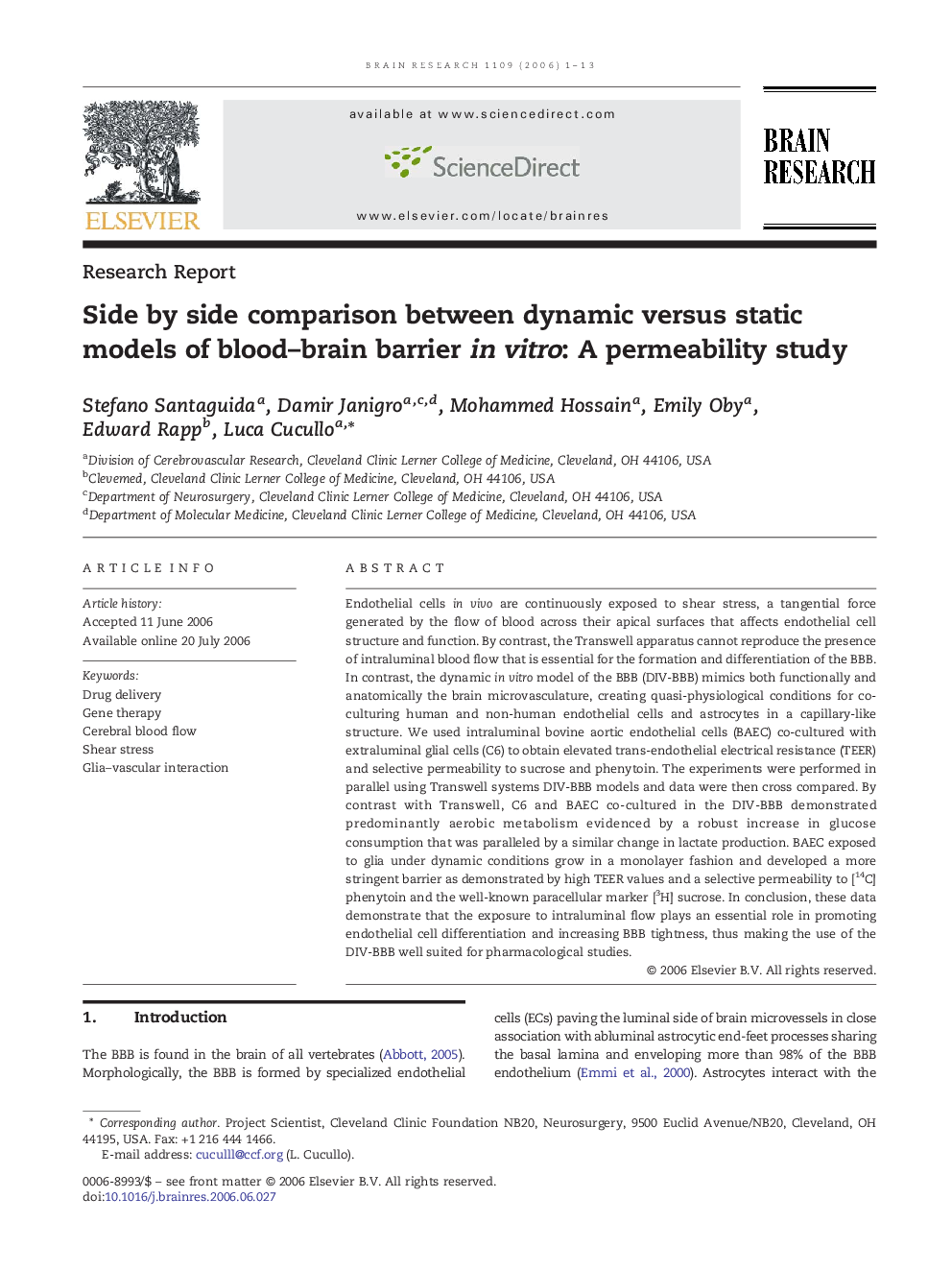| کد مقاله | کد نشریه | سال انتشار | مقاله انگلیسی | نسخه تمام متن |
|---|---|---|---|---|
| 4332314 | 1292894 | 2006 | 13 صفحه PDF | دانلود رایگان |

Endothelial cells in vivo are continuously exposed to shear stress, a tangential force generated by the flow of blood across their apical surfaces that affects endothelial cell structure and function. By contrast, the Transwell apparatus cannot reproduce the presence of intraluminal blood flow that is essential for the formation and differentiation of the BBB. In contrast, the dynamic in vitro model of the BBB (DIV-BBB) mimics both functionally and anatomically the brain microvasculature, creating quasi-physiological conditions for co-culturing human and non-human endothelial cells and astrocytes in a capillary-like structure. We used intraluminal bovine aortic endothelial cells (BAEC) co-cultured with extraluminal glial cells (C6) to obtain elevated trans-endothelial electrical resistance (TEER) and selective permeability to sucrose and phenytoin. The experiments were performed in parallel using Transwell systems DIV-BBB models and data were then cross compared. By contrast with Transwell, C6 and BAEC co-cultured in the DIV-BBB demonstrated predominantly aerobic metabolism evidenced by a robust increase in glucose consumption that was paralleled by a similar change in lactate production. BAEC exposed to glia under dynamic conditions grow in a monolayer fashion and developed a more stringent barrier as demonstrated by high TEER values and a selective permeability to [14C] phenytoin and the well-known paracellular marker [3H] sucrose. In conclusion, these data demonstrate that the exposure to intraluminal flow plays an essential role in promoting endothelial cell differentiation and increasing BBB tightness, thus making the use of the DIV-BBB well suited for pharmacological studies.
Journal: Brain Research - Volume 1109, Issue 1, 13 September 2006, Pages 1–13